#museu berardo
Text

Tom Wesselmann (US 1931-2004)
Great American Nude #52 (1963)
Acrylic, fabric and prints on plywood.
45 notes
·
View notes
Text
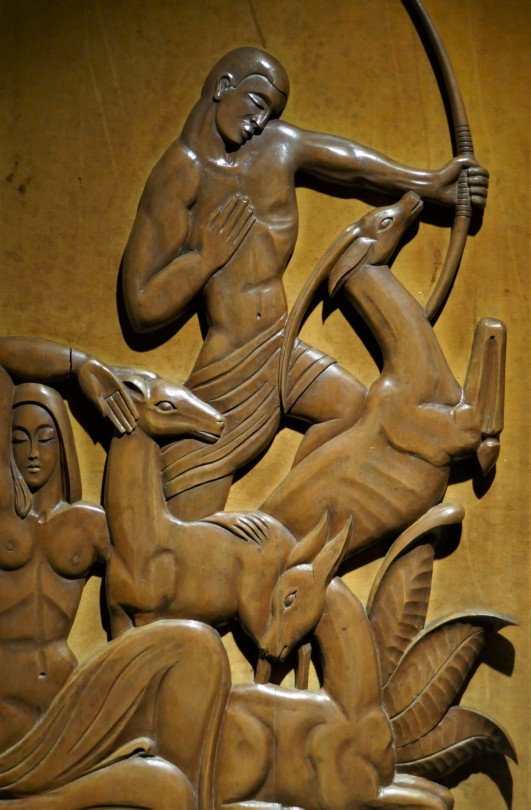



Museu Berardo Art Nouveau, Art Deco
Lisboa
fotos cjmn
10 notes
·
View notes
Text

Gerhard Richter, Abstraktes Bild, 1987. Oil on canvas, in 2 parts, each 102 3/8 x 78 7/8 in.
Total overall dimensions 102 3/8 in. x 157 3/4 in.
NEW YORK, NY.- Phillips presented the star lot of the fall auction season – Gerhard Richter’s exceptional Abstraktes Bild. Painted in 1987 and comprised of two large-scale panels, the work is over thirteen feet wide and nearly nine feet tall, making this one of the largest works from Richter’s oeuvre to ever be offered at auction. Following a tour to Taipei and Hong Kong, the monumental painting will be exhibited in New York in the lead up to the Evening Sale of 20th Century & Contemporary Art, where it will be offered with an estimate available upon request.
Jeremiah Evarts, Deputy Chairman, Americas, Senior International Specialist, 20th Century & Contemporary Art, said, “A towering example from the most significant body of work in Richter’s career to date, we are honored to present Abstraktes Bild as the cornerstone of our fall auction season. Bearing extraordinary exhibition history, the significance of this painting’s place in the artist’s oeuvre cannot be overstated. The work was first exhibited at Durand-Dessert, Paris in 1988. A decade later, it was shown at the prestigious Carnegie International, a sign of the work’s enduring ability to represent Richter’s artistic output of the 1980s, arguably the most important decade of his career. With the market for similar paintings by Richter from this period finding homes in some of the most prestigious collections across the globe, we look forward to presenting this remarkable work to Phillips’ community of collectors.”
Abstraktes Bild displays Richter’s virtuosity in abstraction and his inimitable talent as a colorist. With Richter’s unique use of the squeegee, a tool he began using for abstract work just one year prior, the artwork captures the movement of the artist's body through the painting process. Painted shortly after the artist moved away from his figurative, photo-based painting, Abstraktes Bild reveals the explosive power, depth of color, and emotional resonance that would distinguish Richter as one of the most profound abstract painters of his generation.
Besides the present work, there is only one other Abstraktes Bild created in 1987, of similarly epic scale, which resides in the Museu Coleção Berardo, Lisbon. Similar Abstrakte Bilder from 1986 to 1989 – Richter’s most desirable period – populate esteemed public and private collections around the world, including those of The San Francisco Museum of Modern Art; Ergo Versicherungsgruppe AG, Düsseldorf; Instituto do Patrimônio Histórico e Artístico Nacional, São Paulo; Carré d’Art, Nîmes; Landesbank Baden-Württemberg, Stuttgart; the Montreal Museum of Fine Arts; and the Saint Louis Art Museum, which owns the iconic November, Dezember, Januar paintings of 1989.
Courtesy Alain Truong
13 notes
·
View notes
Text
Paula Rego (1935-2022), "O Impostor", 1964
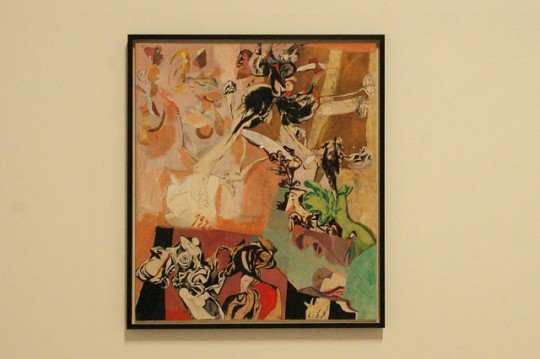
Lisboa - Centro Cultural de Belém - Museu Coleção Berardo
5 notes
·
View notes
Text
William Scott (1913-1989), "Yellow Still Life", 1958
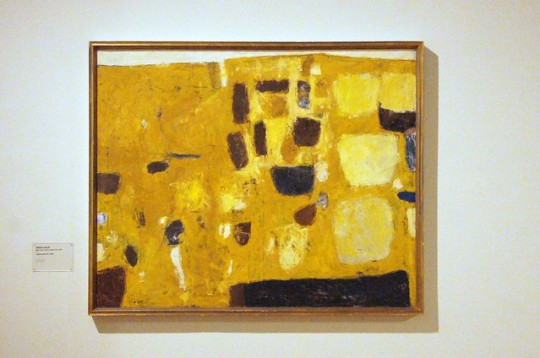
Lisboa - Centro Cultural de Belém - Museu Coleção Berardo
William Scott CBE RA was a prominent abstract painter from Northern Ireland, known for his themes of still life, landscape and female nudes. He is the most internationally celebrated of 20th-century Ulster painters. His early life was the subject of the film Every Picture Tells a Story, made by his son James Scott.
4 notes
·
View notes
Text
[ad_1]
Cosy bars, majestic castles and timeless architecture make Lisbon a cool and entrancing city. Our 3-day Lisbon itinerary puts it all together, so you have time to savour it all.
By: Paul Healy |
Published: 16 Apr 2024
span box-shadow: none !important; filter: brightness(1) !important; ]]>
Lisbon is cool.
As a city unrestrained by convention, Lisbon is bursting with personality. Beside majestic architecture housing Portugal’s famous blue tiles, flea markets hum to the murmur of curious browsers.
Re-purposed industrial areas give it an edge for artistic expression, while timeless monasteries captivate with beguiling designs.
Windy lanes climbing up and down narrow streets hide tiny bars serving simple tapas and local wines. Live music spills from open windows; the wistful warbling of fado fills squares with an inexplicable yearning.
We’ve visited Lisbon several times, and this itinerary captures everything we love about this alluring city. From the best local areas to the top tourist spots; exquisite galleries to the coolest street art; glorious castles to quirky shops.
And of course, pastel de nata.
IN THIS GUIDE
3-DAY LISBON ITINERARY
DAY 1
São Jorge Castle, São Vicente de Fora, Graca’s Campo de Santa Clara, National Palace, Cathedral
DAY 2
Antiga Confeitara de Belém, Jerónimo’s Monastery, Museu Coleção Berardo, Padrão dos Descobrimentos, LX Factory, Santa Catarina
DAY 3
Tram 28, Praça Luis de Camōes, Praça de Principe Real, Miradouro de São Pedro de Alcãntara, Elevador da Gloria, Igreja de São Domingos, Convento do Carmo
LISBON MAP | ABOUT THIS ITINERARY
We’ve put this itinerary together after several visits to Lisbon. It has been designed to minimise the travel time between sights and you can follow most of this itinerary on foot. The map below is organised by each of the 3 days.
>>
DAY 1 – ALFAMA & OLD LISBON
Alfama, perched up on the hill, is a maze of alleyways winding between grand historic buildings. There are sweeping views over the city and the sea, similar to some of the vistas in Porto.
We always have a great time simply ambling around the area but here is a recommended route.
SÃO JORGE CASTLE
Start your 3 days in Lisbon at São Jorge Castle, high on the hill in Alfama. It was once a Moorish castle, but little remains from that period and most of it has been rebuilt over the years.
The small museum could do with some improvements, but the views over the city from the rambling walls are excellent.
Castelo de São Jorge / Skip-the-Line Tickets
SÃO JORGE CASTLE
CHURCH OF SÃO VICENTE DE FORA
Grab a quality coffee at Copenhagen Coffee Lab and Bakery, before entering the Church of São Vicente de Fora.
The church itself is decent and worth a look, but the monastery and cloisters next door are incredibly impressive. Blue tiles, protected by vaulted ceilings, shimmer on the white walls.
The atmospheric side chapels have tombs adorned with skulls with a cloaked statue standing guard.
Igreja de Sao Vicente de Fora / Check current opening times.
SÃO VICENTE DE FORA
GRACA’S CAMPO DE SANTA CLARA
After the church, head over to Graca’s Campo de Santa Clara, where a massive flea market, Feira da Ladra, covers the streets (Tuesday and Saturday).
It sells everything you will never need: old rotary phones, broken mannequins and pre-loved vinyl. The market is great for people watching and you may even pick up a bargain.
LUNCH
There are plenty of atmospheric places to grab lunch near the market, we loved Tabernita for the traditional Portuguese dishes.
FEIRA DA LADRA
NATIONAL PANTHEON
In the afternoon, enter the striking Panteão Nacional. Originally built as a church it now houses monuments to the great and the good of Portuguese history including a shrine to Vasco da Gama who brought massive wealth to Lisbon.
The entrance ticket allows access to the roof with excellent views of the city. From the upper terraces take in a birdseye view of the
marble hall.
NATIONAL PANTHEON
LISBON CATHEDRAL
Next, stroll the tightly packed twisty streets of Alfama.
Head past the cute stores and tiny bars to Miradouro das Portas do Sol observation deck for more views. Drop down the hill to the castellated fortress that is Lisbon Cathedral.
The Romanesque Lisbon Cathedral dates back to the 12th century. With an imposing facade and two bell towers on either side, it rises like a medieval fortress from the old town.
The view from the loft was the highlight for us.
LISBON CATHEDRAL
PRAÇA DO COMÉRCIO
Finally, leave Alfama and stroll down towards Praça do Comércio. The harbour-facing plaza is one of the largest in Portugal and the most beautiful in Europe. It was completely remodelled after the earthquake and today it’s the seat of the Portuguese state departments.
The large ornate square an excellent photo opportunity, but we’d suggest avoiding the restaurants around the square.
PRAÇA DO COMÉRCIO
FADO + EVENING
In the evening head to Bairro Alto.
Grab a drink on the steps at Meson Andaluz. Then, choose from the daily changing menu of local dishes at the tiny but charming Taberna da Rua das Flores.
Later in the evening, Tasca Do Chico offers an intimate great value fado experience. One block north, cool jazz drifts out of Páginas Tanta.
At Portas Largas a mixed young crowd can be found enjoying live pop music. If you can’t decide, just go to all three. There’s no entrance charge and the drinks are cheap.
DAY 2 – BELÉM & WEST LISBON
The seafront area of Belém lies to the west of Lisbon city centre. Come here for engrossing architecture, the epicentre of modern art in the city, and the best pastel de nata in Lisbon.
ANTIGA CONFEITARA DE BELÉM
Take tram 15 to Belém and begin the second day of your 3-day Lisbon itinerary with coffee and pastel de nata (Portuguese custard tart) from Antiga Confeitara de Belém. Yes it has become a large tourist institution, but the pastel de nata is still the best in town.
JERÓNIMO’S CHURCH AND MONASTERY
After breakfast head to Jerónimo’s Church and Monastery.
The remarkable vaulted ceiling of the church is held aloft by intricately carved stone pillars, illuminated by beams of light cascading through colourful stained glass windows.
The tomb of Vasco de Gama – the first person to sail around the Cape of Good Hope and therefore enable Portugal to build an empire – takes pride of place.
The church is free but we recommend paying to go into the monastery. The cloisters are magnificent and the view of the church from the upper choir is not to be missed.
JERÓNIMO’S CHURCH AND MONASTERY
MUSEU COLEÇÃO BERARDO
End the morning at Museu Coleção Berardo, Lisbon’s best modern art offering. The permanent collection is well-labelled and offers a history lesson in the development of modern art.
The temporary exhibitions have an excellent reputation, it was one of our favourite experiences in Lisbon on our last visit.
MUSEU COLEÇÃO BERARDO
BELÉM TOWER & PADRÃO DOS DESCOBRIMENTOS
Cross the street and peer up at the tower of Belém.
The climb up to the top is not really worth the wait, so we’d suggest skipping in and strolling along the seafront to find a spot for lunch.
After recharging, pass by Padrão dos Descobrimentos, the photogenic monument to Portugal’s navigational prowess.
PADRÃO DOS DESCOBRIMENTOS
BELÉM TOWER
LX FACTORY
Head toward the city on tram 15, but before you get there, jump off at LX Factory, an old textile factory that has been converted into a modern and creative space under the railway line.
There’s some excellent street art on old factory walls, indie shops, a very cool bookstore and some of the best coffee in town. It’s a great place to hang out and relax.
SANTA CATARINA
Hopping back on tram 15, spend the evening in the quaint neighbourhood of Santa Catarina which sits on top of a hill. A drink at Noobai Café offers views over the water. To get here it’s a steep walk up the hill or you could take the fun way and ride up on Eleva
dor da Bica.
LX FACTORY
DAY 3 – BAIRRO ALTO, BAIXA & CHIADO
The central area of Lisbon is an eclectic mix. Narrow alleyways crisscross grand shopping streets, dilapidated ruins sit next to striking hotels, and music wafts through open doors and windows. It’s a great part of the city.
TRAM 28
On the last day of this 3-day Lisbon itinerary, get an early start (to avoid the queues) and head to Praça Martim Moniz to board Tram 28. This tram twists and turns up the hilliest, narrowest and most scenic lanes in Lisbon. It loops around Alfama, across the centre of town and back up into Chiado.
PRAÇA DE PRINCIPE REAL
Jump off the tram in Chiadom explore the shops around Praça Luis de Camōes and then head north into the tightly packed narrow lanes of Bairro Alto.
Check out the various new concept stores around Praça de Principe Real before lunch at A Cevicheria. Sit at the counter under a giant octopus, and admire the chef preparing mouth-watering fish dishes.
MIRADOURO DE SÃO PEDRO DE ALCÃNTARA
After lunch check out the view at Miradouro de São Pedro de Alcãntara, which we think gives you the best view in the city. Then make your way down to Rossio and Baixa.
You can either take the Elevador da Gloria tram or walk down the path alongside the tram tracks to inspect some of the coolest street art in Lisbon.
IGREJA DE SÃO DOMINGOS
You now find yourself in Rossio and Baixa – newer Lisbon neighbourhoods, built after the earthquake of 1755.
Explore the squares and statues making sure you call in at Igreja de São Domingos. This atmospheric church suffered damage during the earthquake and was burnt down in 1959. The roof was destroyed and has been rebuilt but the walls bear the scars of both events.
IGREJA DE SÃO DOMINGOS
CONVENTO DO CARMO
Skip the long queues and only average views of Elevador de Santa Justa and take the free supermarket lift to Rua Garrett. It’s less glamorous, but just as effective.
Stroll the shops before visiting Convento do Carmo. The convent was damaged in the earthquake, and now only towering arches reach into the sky.
The chapel at the back contains a strange mix of fascinating artefacts: tombs of the famous, a 2nd-century Egyptian sarcophagus and most interestingly, two mummies of Peruvian children.
BAIRRO ALTO
For the final evening, grab dinner at Artis Bar in Bairro Alto. It has a great local wine bar atmosphere and tasty dishes at decent prices. It’s also perfectly positioned for people spilling into the streets as music wafts in the air.
CONVENTO DO CARMO
WHERE TO STAY IN LISBON
Lisbon is a relatively compact city, but it’s still a good idea to stay as centrally as possible. We recommend staying in Baixa/Chiado, Bairro Alto or Alfama.
All these neighbourhoods ooze the charm that makes Lisbon the city that it is. They’re all centrally located allowing you to get an early start in the morning, and a late night in the evening.
BUDGET
CASA C’ALMA
Casa C’Alma is a beautifully decorated B&B with a small, friendly vibe and a big continental breakfast. It’s located in a lovely neighbourhood about 1 mile from the city centre with plenty of restaurant options nearby.
BOOKING.COM
MID-MARKET
CASA BALTHAZAR
The modern, self-catering apartments of Casa Balthazar are bang in the centre of town, yet exude a relaxed chilled-out calm. The views are superb but upgrade to the Jacuzzi Terrace room for spacious luxury with landmark views.
HOTELS.COM / BOOKING.COM
UPMARKET
MEMMO ALFAMA
For an emphasis on design with all the latest gadgets, it’s hard to go past Memmo Alfama for your Lisbon stay. Although surrounded by some of the best attractions in Lisbon, it will be hard to leave the rooftop bar and pool with sweeping views over the Tagus River.
HOTELS.COM / BOOKING.COM
HOW TO GET AROUND LISBON
Lisbon has a comprehensive public transport network including trams, funiculars, buses and a metro.
A Navegante Card is a quick and easy way to pay for all your travel. The ca
rd costs €0.50 and can be charged with individual tickets, a day pass (€6.40 / £5.95 / $7.90), or with a balance of up to €40 to use as pay-as-you go.
Cards can be purchased and charged at metro stations or small stores displaying the Navagante sign.
However, the best way to get around the city is to walk. This Lisbon itinerary puts all the sights and experiences in the right order, so you don’t have to spend too much time between places.
BEST TIME TO GO TO LISBON
The best time to visit Lisbon is during the shoulder seasons of March to May and September to October. Over this period, the temperatures are generally comfortable and there are fewer visitors.
You might also snap up a bargain with accommodation places slightly cheaper over this period.
As with most European destinations, summer is the peak season when both the temperature and visitor numbers are high. In winter it can be wet and windy, although in Lisbon it’s rarely uncomfortably cold.
WHAT TO BOOK BEFORE A TRIP TO LISBON
Most attractions in Lisbon don’t require pre-booking and we wouldn’t recommend getting too much in advance so you can leave your itinerary flexible.
If you’re visiting during peak times, you may want to book ahead to beat the queue especially São Jorge Castle and Saint Jerónimos Monastery.
SAVING
LISBON CARD
With access to 23 museums and free tram passes, the Lisbon Card is a very cost-effective way to see the main sights in the city. Cards can be purchased for 24, 28 or 72 hours.
HOW MUCH TIME IN LISBON?
Most of the main sights in Lisbon could be seen in 2 days. It’s a relatively compact city with good local transport so getting between all the main attractions is efficient.
We have provided a 3-day Lisbon itinerary because this allows you to see all the impressive historical sights and enjoy some local experiences. It also leaves a little time to wander the streets and soak up the atmosphere.
Lisbon is one of our favourite cities in Europe. It’s charming and easy; beautiful and interesting. Yet the nightlife is pumping, the wine free-flowing and the locals friendly. So, you could easily spend up to 4 or 5 days visiting Lisbon, especially if you added a day trip to Sintra, which you could either do on your own or join a tour.
TIPS FOR VISITING LISBON
Firstly, read our guide to the best things to do in Lisbon which covers all our top highlights in more detail.
TRAM 28 TIPS
Getting on board Tram 28 at Praça Martim Moniz can be painful as queues are often long. Get their early or walk to the next stop at Rue Palme and hop on there. Tram 28 is a wonderful Lisbon experience but a pick-pocketers delight, so keep an eye on your stuff.
STREET SELLING
The whispers of “Hashish? Cocaine?” on the streets of Santa Maria Maior is part of a well-known fake drug annoyance embraced by Lisbon. Simply say “no thanks” and move on, in most cases, you’re just rejecting flour or crushed up bay leaves.
AUTHENTIC FADO
Fado is a moving experience in Lisbon, but the best never gets advertised or promoted to tourists. If you hear it wafting from a packed bar, but there are no signs, this is the place to check out.
TOURIST RESTAURANTS
Lisbon has grasped the concept of the tourist restaurant. If you want a local dining experience, gravitate towards places without English menus, and avoid places with people hassling you out the front.
MIRADOUROS
Always take the opportunity to collect the views at a miradouro; they’re a great place to hang out and Lisbon’s array of roof tiles is stunning. Some of the best are:
Miradouro das Portas do Sol
Miradouro da Graça
Miradouro de Santa Catarina
Miradouro de Senhora do Monte
Miradouro de Monte Agudo
MORE PORTUGAL READING
ANYWHERE WE ROAM ISREADER-SUPPORTED
When you buy through links on our site, we may earn a small affiliate commission at no extra cost to you.
You can also shout us a coffee.
Thanks for your support – Paul & Mark.
INSTAGRAM | FACEBOOK
[ad
_2]
Source link
0 notes
Text
Bienvenus à Lisboa !
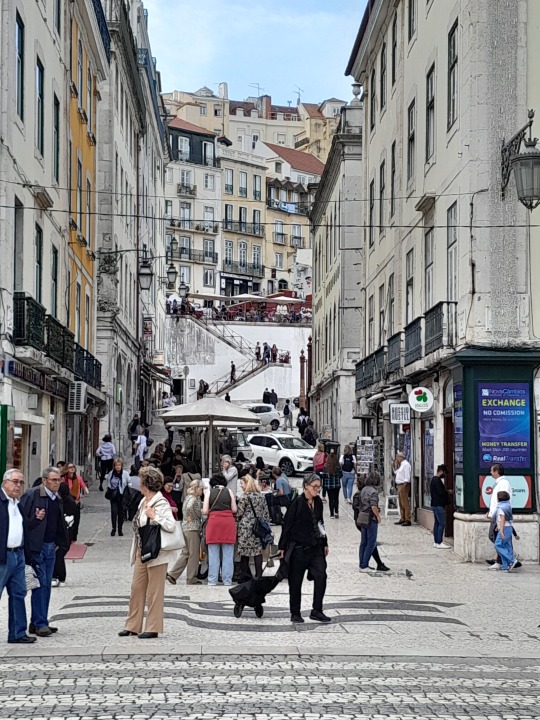
Mardi 24, mercredi 25 octobre, nous nous installons à Estoril, situé au nord ouest de Lisbonne, à 25 minutes en TER. Nous prendrons ce moyen de transport chaque jour pour rallier la capitale, dans laquelle il est impossible de circuler ou de garer sa voiture.
En bons français gourmands que nous sommes, à l'aller comme au retour, nous franchissons régulièrement le seuil de Time Out Market, vaste espace dédié à la nourriture, situé dans Mercado da Ribeira. Nous pouvons nous installer sur de grandes tablées partagées pour simplement boire un verre ou se restaurer.
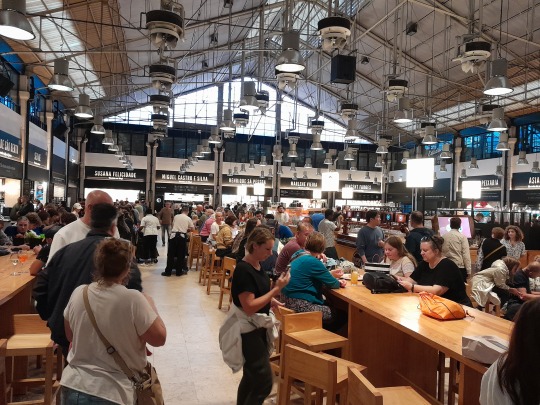
Nous avons adoré cet endroit, le concept est génial, nous y avons pris l'apéritif, un autre jour dégusté une excellente cuisine portugaise et partagé des discussions sympathiques avec des anglais…
Nous débutons le parcours de visite par la fameuse Praça do Comercio, l'une des plus grandes d'Europe dans l'axe de l'Arc de Triomphe et ouverte sur le Tage.
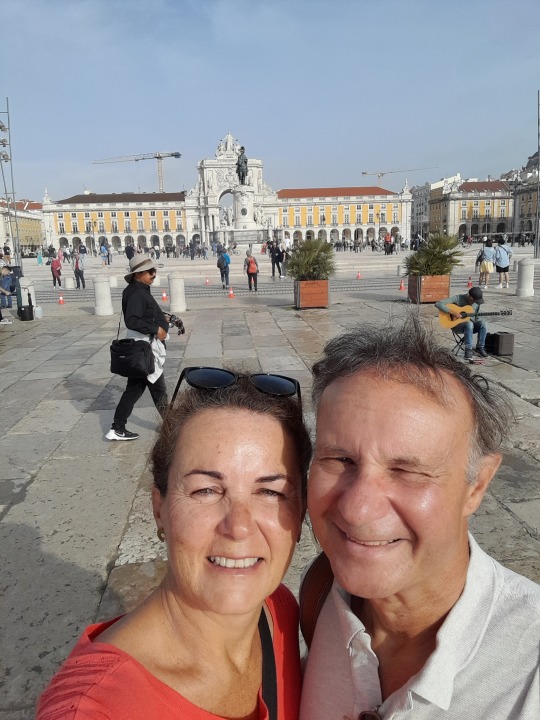
Lisbonne est faite de collines qui permettent des échappées sur les quartiers : Baixa, Chiado, Rossio, Alfama...
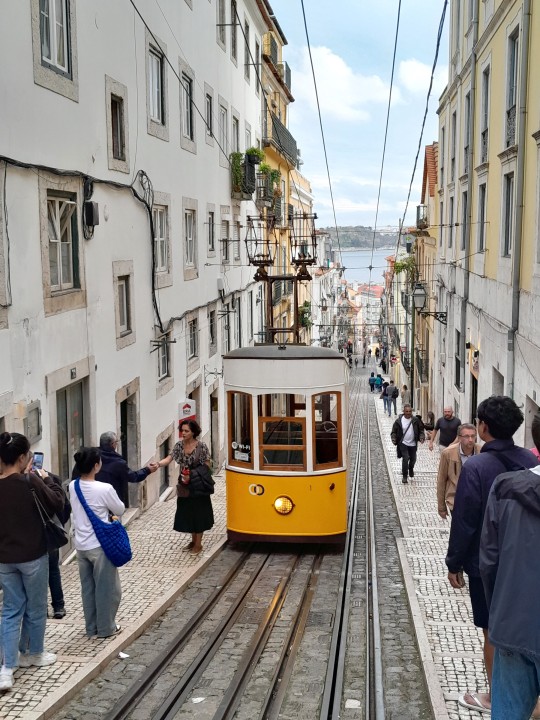

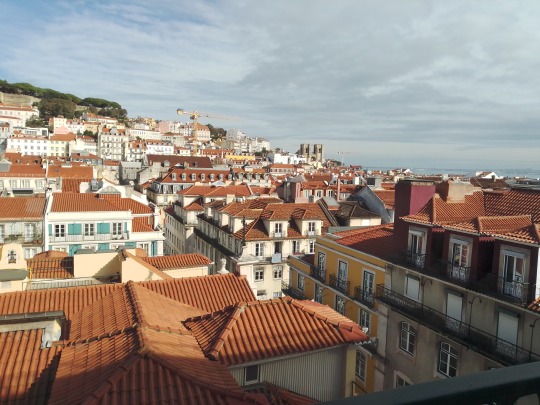

Il y a un nombre incroyable de musées à Lisbonne et nous sommes obligés de faire une sélection. Le premier jour, nous choisissons le Lisboa Story Center, qui raconte l'histoire de Lisbonne depuis ses origines et sa reconstruction après le tremblement de terre de 1755, avec un simulateur.
Le second jour, nous enchainons avec le musée Centre d'interprétation de la morue.


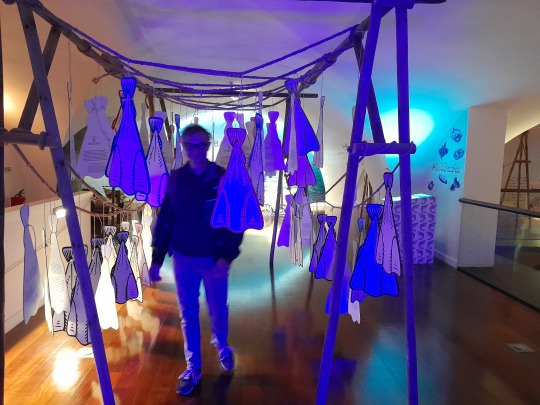
A Lisbonne, il y a aussi de nombreux jardins, nous en avons parcouru certains, comme le Jardim Botanico.

Belle visite et dodo !
Le retour à Estoril du premier jour est un peu agité, car il fait nuit, nous nous trompons 2 fois de station et pour la troisième, nous nous trompons de sens…
Jeudi 26 et vendredi 27 octobre : nous nous rendons à Belèm pour visiter l'exceptionnel Mosteiro do Jeronimos, pas de chance, c'est jour de grève au Portugal dans la fonction publique! Qu'à cela ne tienne, nous fonçons jusqu'au Museu Berardo, à côté, qui vient d'être remembré et n'ouvrira ses portes que le soir même… Après ces déconvenues, nous nous dirigeons vers les Docks, qui se situent sous le célèbre Ponte du 25 avril.
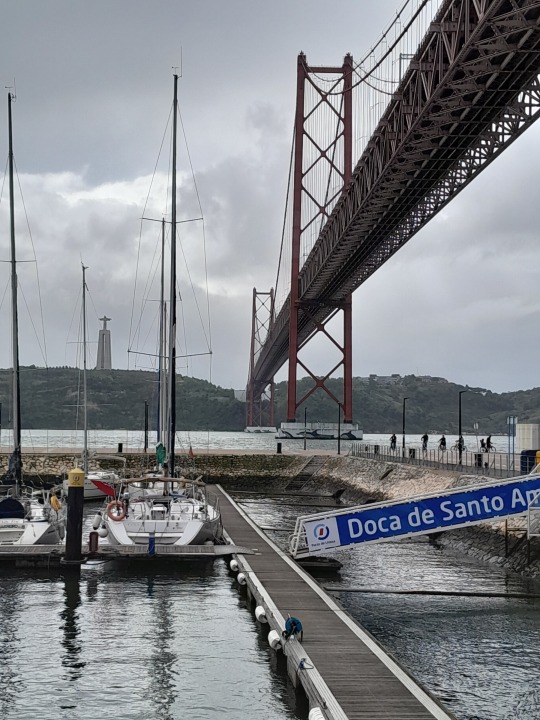


Puis nous rejoignons L.X. Factory, qui sont aussi d'anciens docks réaménagés : des boutiques, une librairie, des restaurants…
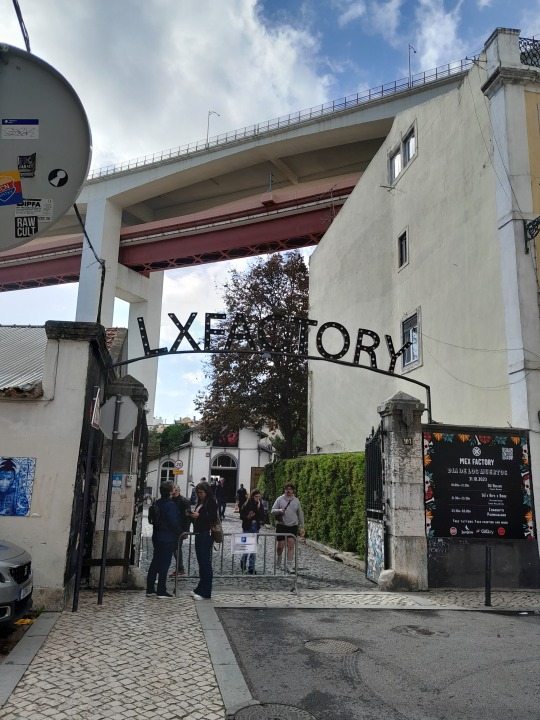

Et nous dégustons le meilleur gâteau au chocolat du monde !!! Chez Landeau.

Incroyable, si, si!!
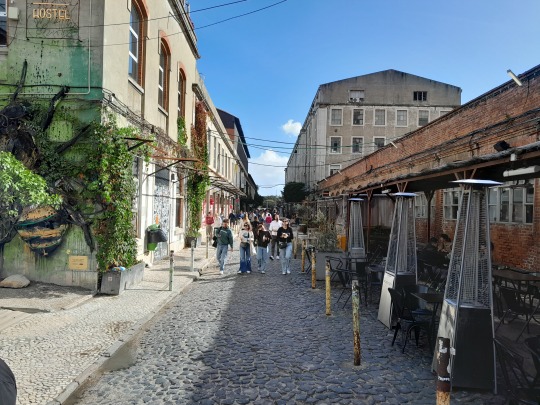
Nous terminons au Museu Arte Deco, ancienne demeure qui réunit une collection exceptionnelle de meubles et objets des époques Art Nouveau, Art Déco.
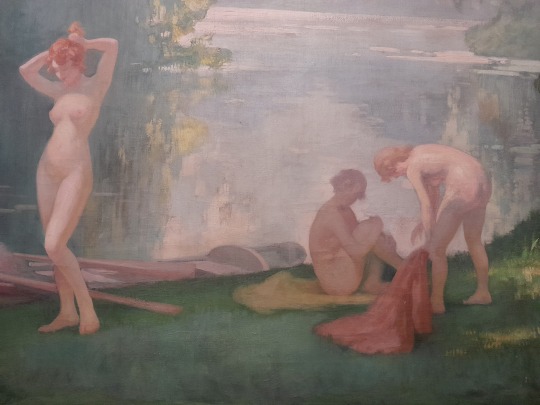
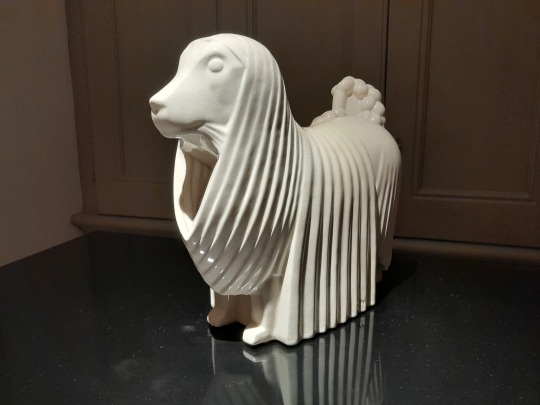
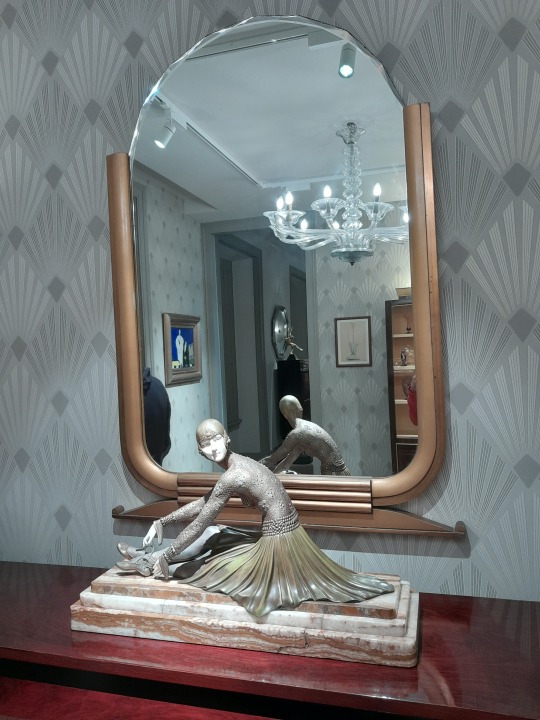
Até brèvé...
1 note
·
View note
Text

Museu Berardo Arte Deco - B-MAD
Lisboa/Lisbon/Portugal
photos cjmn
1 note
·
View note
Text
No dia 28 de março, é celebrado o Dia Nacional dos Centros Históricos e o Município de Estremoz não ficou de fora desta comemoração. Foi apresentado publicamente o projeto de Investigação CAETZ “Carta Arqueológica do Concelho de Estremoz. Balanço dos trabalhos realizados", às 14h30, no Museu Berardo Estremoz.
O Projeto de Investigação CAETZ é resultado de um Protocolo de Colaboração entre o Município de Estremoz e a Universidade de Évora, coordenado pelo Prof. Doutor André Carneiro, docente do Departamento de História. A iniciativa tem como objetivo realizar um levantamento sistemático das evidências materiais existentes no concelho de Estremoz, contribuindo com um documento que garanta a salvaguarda, a valorização e a divulgação do património existente.
De acordo com o município, o projeto CAETZ permitirá conhecer e gerir o património arqueológico na ótica autárquica, maximizando os valores patrimoniais e minimizando eventuais impactos decorrentes de futuros empreendimentos. O património arqueológico do concelho de Estremoz assumir-se-á, assim, como um recurso fundamental na gestão articulada do ordenamento do território e no desenvolvimento sustentado do concelho de Estremoz.
A apresentação do projeto de Investigação CAETZ faz parte de um extenso programa preparado pelo Município de Estremoz para celebrar o Dia Nacional dos Centros Históricos. Os eventos incluíram visitas guiadas, exposições e ações de sensibilização sobre a importância da preservação do património cultural e histórico.
O Município de Estremoz demonstra, assim, o seu empenho em preservar e promover o seu património histórico e cultural, através de iniciativas como esta, que visam contribuir para a salvaguarda e valorização deste importante legado.
0 notes
Photo
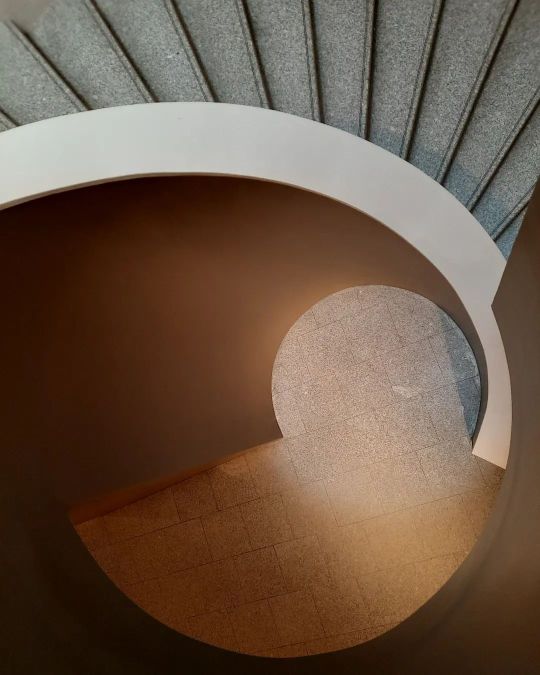
#architecture & #design at #berardocollection #lisboa #fibonacci #dariabarsanphotos #shadow #light #staircase (la Museu Coleção Berardo) https://www.instagram.com/p/CpkgtNsNJ2L/?igshid=NGJjMDIxMWI=
1 note
·
View note
Photo

Reposted from @amagazine_pt A A Magazine é uma revista sobre Portugal e sobre os portugueses. É de coleção e de edição limitada numerada. Pode ser adquirida online em: www.amagazinept.org, Como em vários pontos de venda: LISBOA A Vida Portuguesa @avidaportuguesa Livraria Barata @livrariabarata Livraria Da Travessa @livrariadatravessalisboa Livraria Miosótis @livrariamiosotis Loja do Museu Berardo @museuberardo Hangar Design Store @hangardesignstore Veronique Boutique @veronique_boutique ÉVORA Livraria Fonte de Letras @fontedeletras Papelaria Central @rico.tabacarias_ ELVAS Papelaria Cidade Nova @papelaria_cidade_nova VILA REAL DE SANTO ANTÓNIO @livrarialusiada SAGRES Autêntica Loja Portuguesa @autenticalojaportuguesa #amagazinept #amagazine #arte #cultura #patrimonio #lifestyle #revista #portugal https://www.instagram.com/p/CmbjSw0slxx/?igshid=NGJjMDIxMWI=
1 note
·
View note
Text
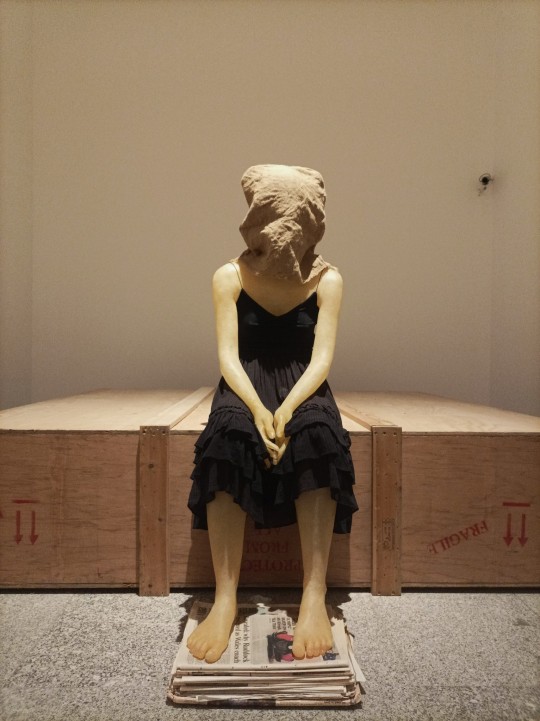

julião sarmento // abstracto, branco, tóxico e volátil / museu berardo
0 notes
Photo
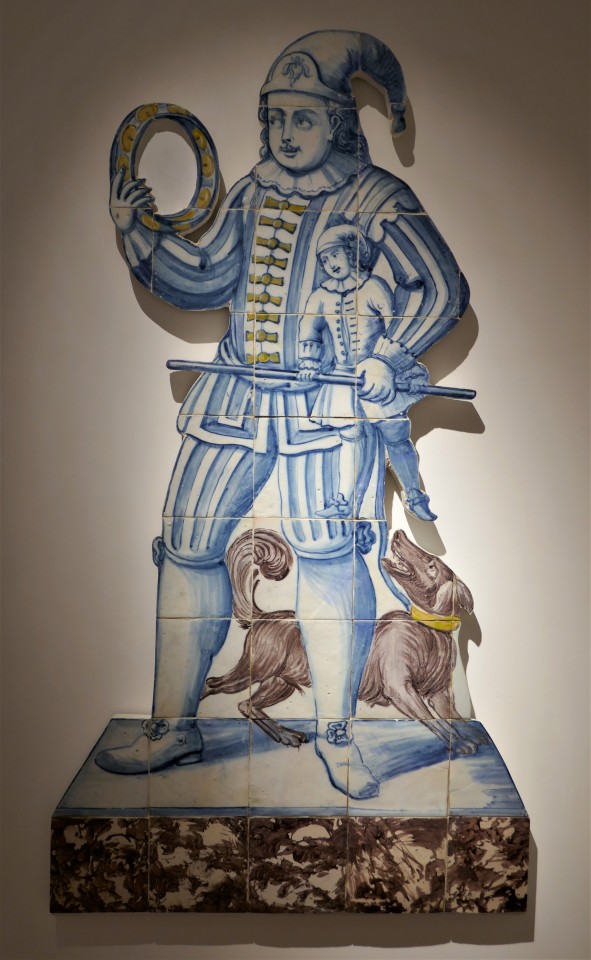
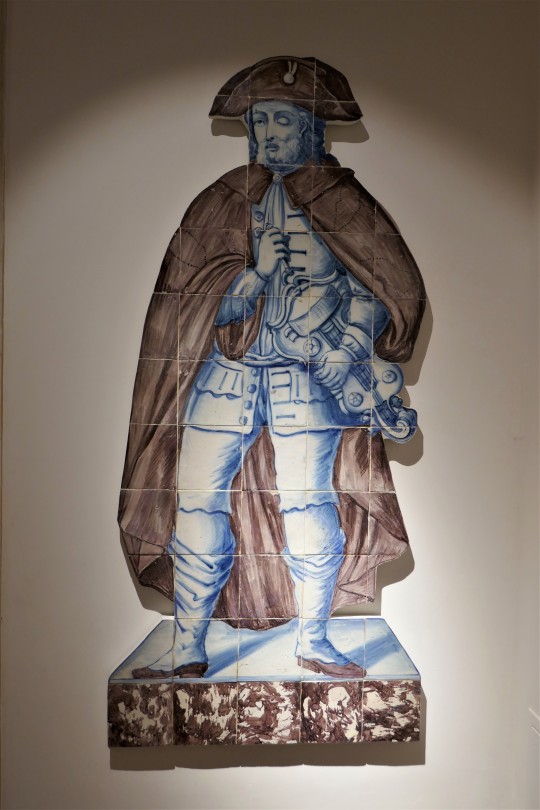

Jograis e Cego a Tocar Sanfona
Nicolau de Freitas (?)
Século XVIII
Museu Berardo Estremoz
Portugal
fotos cjmn
61 notes
·
View notes
Video
Lisboa - Centro Cultural de Belém - Museu Coleção Berardo by jaime.silva
Exposição: "Miguel Telles da Gama - Debaixo da Pele"
sem título, 2003
Miguel Telles da Gama. Nasceu em 1965, em Lisboa, cidade onde vive e trabalha. Expõe, individual e colectivamente, desde 1990.
#Miguel Telles da Gama#Lisboa#Lisbon#Lisbonne#Lissabon#Lisbona#Lisszabon#Lisabona#Lisabon#Lissaboni#Lissabonin#Lisabonos#Lisabonas#Lizbona#Lizbon#Latvia#Lizbonska#Portugal#Portugalia#Portugalsko#Portugália#Portugalija#Portugali#Portugalsk#Portugale#Portugalska#Portogallo#Portúgal#Portugāle#CCB
4 notes
·
View notes
Photo
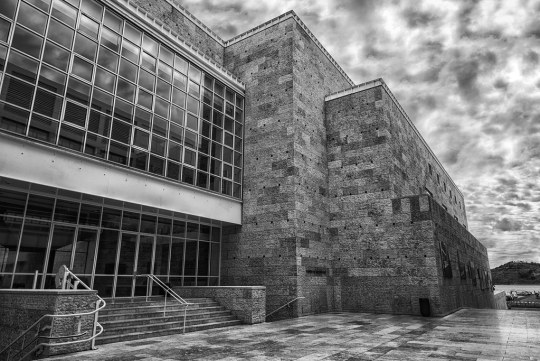
Claude Attard, Parallélépipède, Musée Berardo. Lisbon - License CC BY 2.0
#museu berardo#lisbon#portugal#travel#sightseeing#museum#architecture#b/w photography#urban photography#urban#museu coleccao berardo#centro cultutal de belem#oct#worldofbwphotography
1 note
·
View note
Photo

Museu Coleção Berardo
Lisboa, janeiro de 2021
#museu berardo#lisboa#centro cultural belém#lisbon#street photography#street photographers#ihsp#icp collection#spi collective#fujix100f#x100f#fuji x series#marcelo la farina
1 note
·
View note